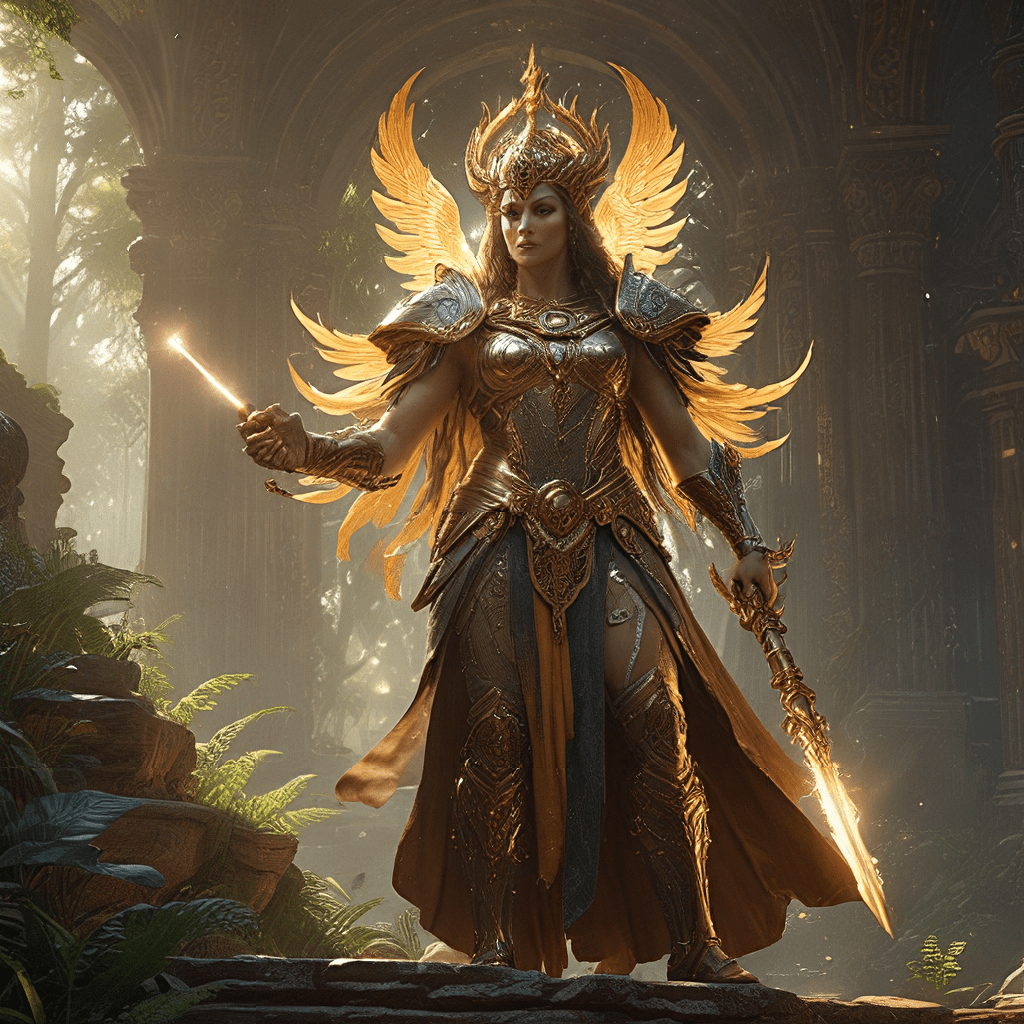The Divine Will: Exploring the Force Behind Creation in Egyptian Mythology
1. The Ma’at: Cosmic Order and Divine Will
In ancient Egyptian mythology, the universe is governed by a profound principle known as Ma’at. Ma’at represents cosmic order, justice, harmony, and truth. It’s the fundamental force that keeps everything in balance, from the celestial bodies to the lives of humans. Imagine Ma’at as the invisible thread that weaves together all aspects of existence, ensuring stability and fairness.
Ma’at is not just a concept; it’s a living embodiment of the divine will. It is believed to be the daughter of the sun god Re, reflecting the close connection between order and the divine source of life. Ma’at’s influence permeates every aspect of the universe and guides human actions. In the realm of the gods, Ma’at ensures justice and order among them. For humans, upholding Ma’at means living a life of righteousness, truthfulness, and balance. It’s a fundamental principle that shapes the way Egyptians understood their world and their place within it.
2. The Ennead: The First Nine Gods and Creation
The creation myth of ancient Egypt is a fascinating story of the Ennead, the first nine gods. These deities are believed to have emerged from primordial chaos and brought forth the universe we know. Atum, the self-created god, is considered the origin of all existence. He is often depicted as a solitary being, emerging from the primeval waters, Nun.
Through a complex series of events, Atum creates the world. He gives birth to Shu, the god of air, and Tefnut, the goddess of moisture, through a process known as “spitting.” Shu and Tefnut then create Geb, the earth god, and Nut, the sky goddess. Geb and Nut, in turn, give birth to the remaining members of the Ennead, who represent various aspects of nature and human existence. The creation myth of the Ennead showcases the power of the divine and the interconnectedness of all creation.
3. The Sun God Re: The Divine Source of Life
In Egyptian mythology, Re is the sun god, a powerful deity representing the life-giving force of the sun. He is believed to journey across the sky each day in his solar barque, bringing light and warmth to the world. Re’s daily journey symbolizes the cycle of life and death, as he travels from the east, representing birth, to the west, symbolizing the underworld.
Re is not only the source of physical light and energy but also the ultimate source of creation and spiritual enlightenment. He is considered responsible for the existence of all life and the maintenance of cosmic order. His role is crucial in ensuring the continuation of existence and the balance of the universe.
4. The Divine Spark: The Creation of Humanity
According to Egyptian mythology, humans were created from the divine essence. Different myths offer varying accounts, but the common theme is the connection between humans and the gods. In one version, humans were created from clay by the god Khnum, while another story recounts that humans were formed from the tears of the gods. These accounts underscore the divine spark within every human being.
The purpose and meaning of human existence in ancient Egyptian belief is closely tied to the concept of Ma’at. Humans are considered to be the stewards of order and harmony. Their role is to maintain balance in the world through righteous actions, fulfilling their obligations to Ma’at and honoring the gods. The relationship between humans and the divine is viewed as a reciprocal one, with humans responsible for upholding the cosmic order in exchange for the gods’ protection.
5. The Divine Will in Action: The Rule of the Pharaoh
In ancient Egypt, the pharaoh was not just a ruler but a divine king, believed to be the living embodiment of Horus, the god of kingship, and the representative of Re on earth. He held the divine right to rule, granted to him by the gods. The pharaoh’s primary responsibility was to uphold Ma’at, ensuring justice, harmony, and prosperity for his people.
The pharaoh’s connection to the divine was evident in his rituals, ceremonies, and monuments. His tomb was a reflection of his journey to the afterlife, and the pyramids were built as a testament to his connection to the gods. By upholding Ma’at, the pharaoh was seen as the bridge between the divine and the human realm, ensuring the well-being of the nation.
6. The Afterlife and the Divine Judgment
Ancient Egyptians believed in an afterlife where the soul was judged by Osiris, the god of the underworld. The deceased were believed to face a divine judgment, where their heart was weighed against the feather of Ma’at. If their heart was found lighter than the feather, they were allowed to enter the afterlife and enjoy eternal happiness.
The judgment in the afterlife was not simply about punishment or reward. It was a test of a person’s adherence to Ma’at throughout their lifetime. The journey to the afterlife was a complex and symbolic one, involving various challenges and encounters with divinities. The ancient Egyptians believed that living a life aligned with Ma’at was crucial not only for this life but also for the journey to the afterlife and the eternal peace that followed.




